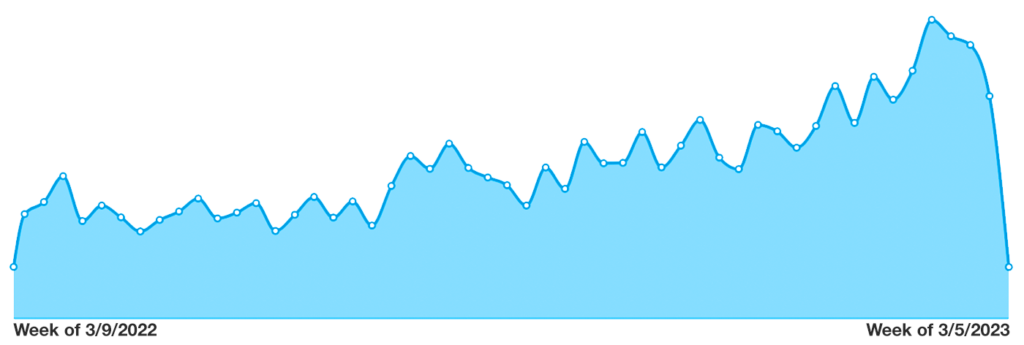


If brands put people first, there would be more authenticity and trust, engagement and persuasion, and true diversity and inclusion.
Welcome to this month’s edition of our newsletter “If Brands Put People First” where we pop up in your inbox monthly with our analysis of campaigns, advertisements, and commercials from brands that we think could make a major impact if they used real people, with real stories, to achieve real results.
In this month’s newsletter, we take a look at the recent rise in the visibility of AI: Artificial Intelligence and evaluate whether or not this technological advancement in the form of virtual influencers is really a good thing for influencer marketing. (Spoiler alert: it’s not!)
How Virtual Influencers Are Entering the Conversation
AI: machines programmed to learn, think, and behave like humans. Advancements in AI are all the rage this year, with downloads from image-generating sites like DALL-E2 and Craiyon filling up your Instagram feeds and chat programs like Bing and ChatGPT in the news almost daily. Artificial Intelligence is making its mark on influencer marketing too, and we’re going to take a look at those trends and, in the end, consider a different definition of AI: the Authentic Influencer.
Virtual influencers are computer-generated characters designed to interact with people on social media platforms. In a 2022 study conducted by the Influencer Marketing Factory, 58% of respondents attested to following at least one virtual influencer and 35% of consumers reported having purchased a product promoted by a virtual influencer.
While these statistics might seem promising, virtual influencers have incited strong antagonistic sentiment from social media users because they promote unrealistic beauty standards, exercise ageism, perpetrate casual racism, and ultimately lack humanity.
In October 2022, for example, the department store Marks & Spencer birthed their first virtual influencer named MIRA (an acronym for Marks, Spencer, Influencer, Reality, Augmented) and the backlash was swift and unsparing, with Twitter and Instagram users saying:

But why take these humans’ words for it? I recently asked the well-known AI ChatGPT itself for its thoughts on virtual influencers, and this is what it said:
While [virtual influencers] have become increasingly popular in recent years, they also have some significant drawbacks, including:
- Lack of authenticity: Virtual influencers are not real people, and they lack the authenticity and relatability that human influencers have. This can make it difficult for them to build real connections with their followers.
- Lack of creativity: Virtual influencers are programmed to act and behave in certain ways, which can limit their ability to be creative and adapt to changing circumstances. This can make their content seem stale or repetitive.
- Potential for backlash: Virtual influencers are not immune to controversy, and there is always a risk that their actions or behavior could offend or upset people.
- Cost: Developing and maintaining a virtual influencer can be expensive, requiring specialized software and talented designers. This can make it difficult for smaller companies or individuals to use them as part of their marketing strategy.
- Ethical concerns: There are ethical concerns around using virtual influencers, particularly around the issue of transparency. Some people may feel deceived if they are not made aware that the influencer they are following is not a real person.
I couldn’t have chatted it better myself.
Authenticity is a trend that continues to show very strong growth this year, and social media is consistently being redefined by the youngest users and their ongoing desire for more honest and relatable content, with a clear rejection of fake and glossy filters and staged moments.

Perhaps a better AI-related angle for Marks & Spencer would have been to ask actual human micro-influencers to talk about how in the virtual age, fashion helps them feel real and allows them to express their unique human identity. Maybe even invite micro-influencers to share how their own special fashion sense empowers them to reject the impossibility of inhuman “perfection” in favor of the beauty of human “imperfection”.

I wondered what my friend ChatGPT thought about all of this, so I checked in with it one more time, asking it to recommend the best alternative to virtual influencers, and here’s what it said:
“…brands could consider partnering with micro-influencers, who have a smaller but more engaged following on social media. Micro-influencers often have a niche audience and are considered more authentic and relatable, which can be an advantage when promoting certain products or services.”
So take it from the robot’s mouth (er…screen), the next time you consider using AI influencers in your campaigns, skip the virtual and stick with the real and the relatable — and make sure that your AI stands for Authentic Influencer.
That’s the power of putting people first in your marketing.